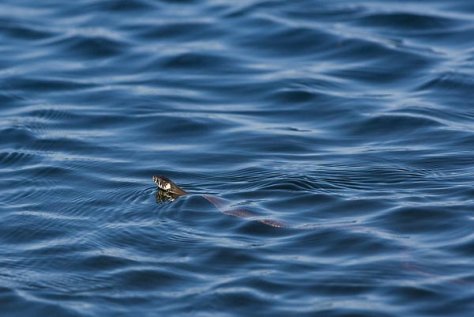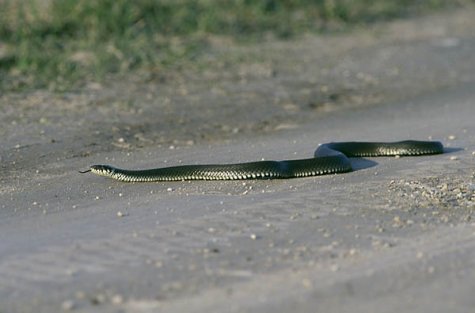Grass snake has always been called house snake
Photos: Arne Ader
Translation: Liis
Grass snake swimming in the sea
Grass snake Harilik nastik or nastik Natrix natrix
Grass snakes swim willingly, in both fresh or sea water. Whether they catch the quick fish fry is another matter but the hunting fervour seems to be there. They swim with the head above the water and at need dive, even for quite long. The grass snake’s habitats are either humid places or near water bodies. It has been called ”house snake” because they adapt fairly easily to humans. They are not venomous but on poking they make lunges with closed mouth towards the intruder and may also bite but that is nothing terrible. On being taken up a grass snake may sometimes excrete an evil-smelling anal liquid.
Female grass snakes lay their leathery-shelled eggs from July onwards into the seaweed piles on the seashore. Inland instead manure heaps or compost piles or leaf heaps are used, and the eggs may be some twenty-thirty. It has been noted that occasionally several females lay their eggs into a common ”nest”. The nest material is ”self-heating” and so suits incubation which lasts six to ten weeks.
As for colour grass snakes are steel gray or black. On the sides of the head are noticeable yellow, creamish or orange patches. The average length of a mature snake is more than a metre – these are generally females. The males are as a rule only half as big.
.
Grass snake on road










